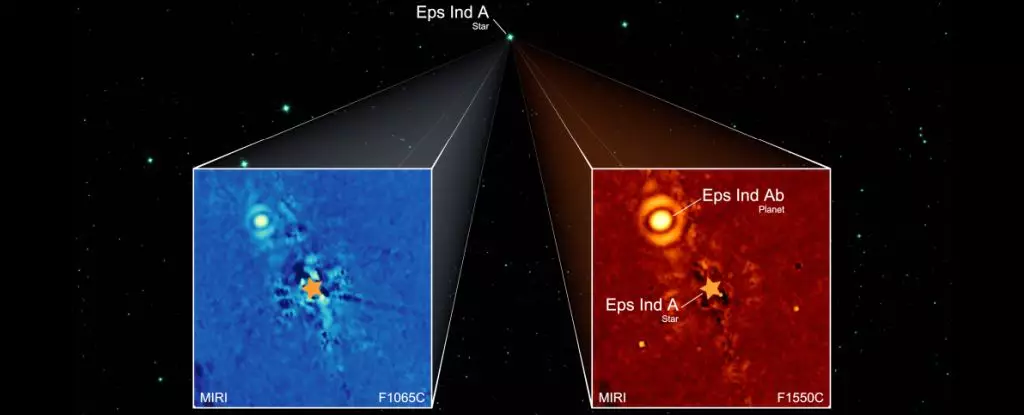Astronomers using the James Webb Space Telescope (JWST) have recently made a groundbreaking discovery – a new exoplanet that they have named Eps Ind Ab. What sets this discovery apart is the fact that this gas giant exoplanet has been directly imaged as a distinct entity separate from its host star. This is a significant achievement as it marks the first time an exoplanet has been imaged by JWST without prior observations from ground-based telescopes.
Eps Ind Ab is not just any ordinary exoplanet; it is much colder than any gas giant previously studied by JWST. This super-Jupiter orbits its star at a distance comparable to that of Neptune from the Sun, making it a rare find among exoplanets. The discovery of Eps Ind Ab hints at a new chapter in exoplanet science, providing valuable insights into the diversity of planetary systems beyond our solar system.
Traditionally, the detection of exoplanets has relied on indirect methods where astronomers infer the presence of planets based on their effects on their host stars. This approach has led to the discovery of over 5,700 exoplanets to date, but direct imaging of these distant worlds remains a challenging task. Exoplanets are often small, far away, and emit dim light, making them difficult to observe directly. However, direct imaging can provide crucial information about exoplanets that would otherwise be inaccessible through indirect methods.
Eps Ind Ab’s parent star, Epsilon Indi A, is part of a triple-star system located just 12 light-years away from Earth. Long-term observations of Epsilon Indi A revealed peculiar behavior, suggesting the presence of a massive planet in its orbit. JWST’s powerful infrared capabilities enabled astronomers to confirm the existence of Eps Ind Ab by directly imaging the exoplanet as a bright spot in the star’s orbital space. This unexpected discovery highlights the importance of direct imaging in uncovering the true nature of alien worlds.
Moving forward, researchers aim to conduct further observations of Eps Ind Ab to determine its atmospheric composition and refine its orbital parameters. By studying nearby planetary systems, astronomers hope to discover more cold gas giants that have eluded detection so far. The discovery of Eps Ind Ab opens up new possibilities for exploring the diversity of exoplanets and advancing our understanding of these distant worlds.
The discovery of Eps Ind Ab represents a significant milestone in exoplanet science, showcasing the capabilities of JWST in directly imaging distant worlds. This groundbreaking finding paves the way for future discoveries and advancements in our quest to unravel the mysteries of the universe beyond our solar system.


Leave a Reply